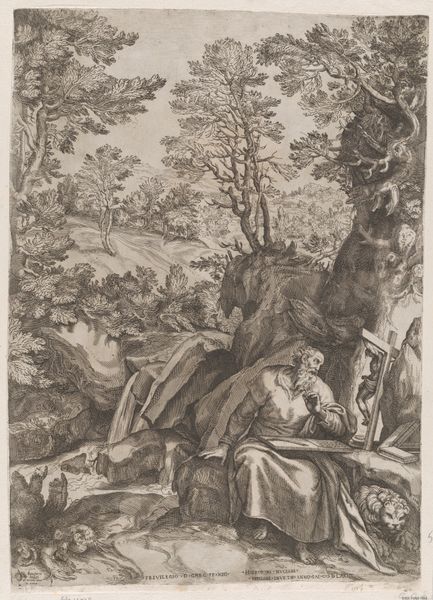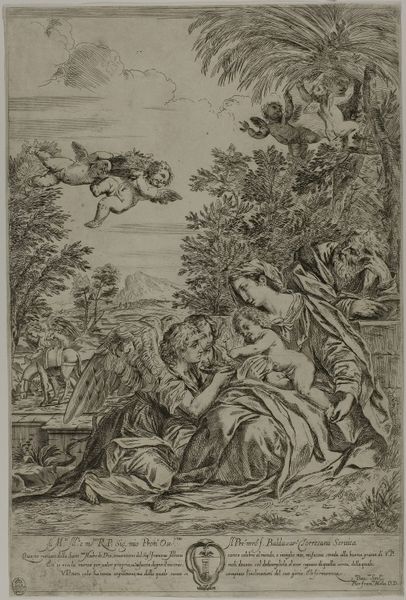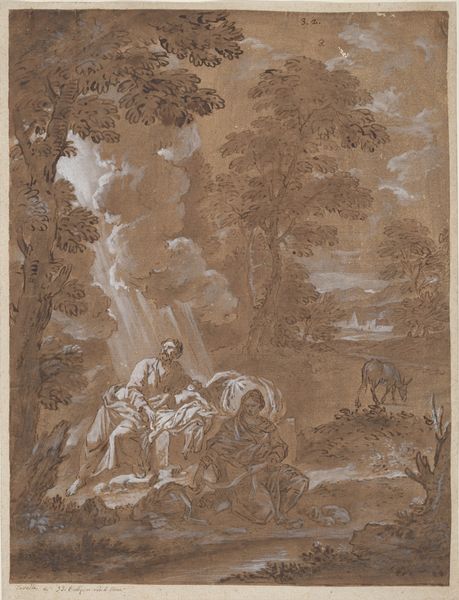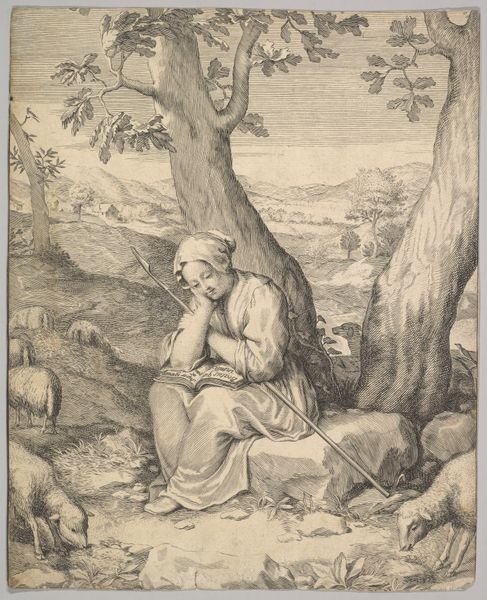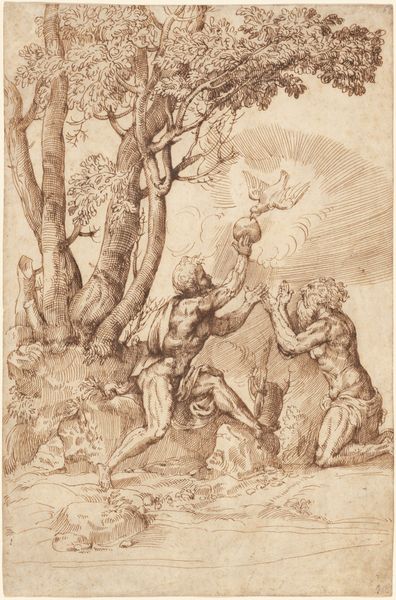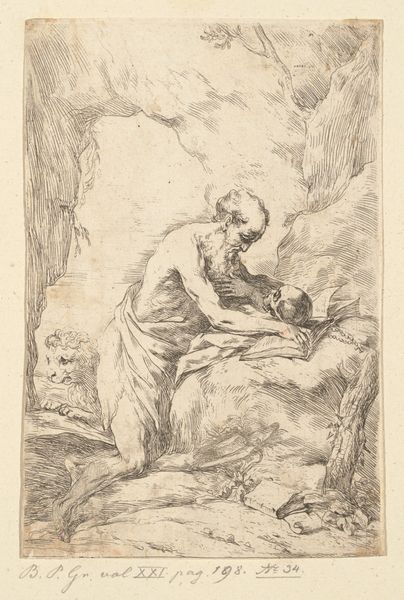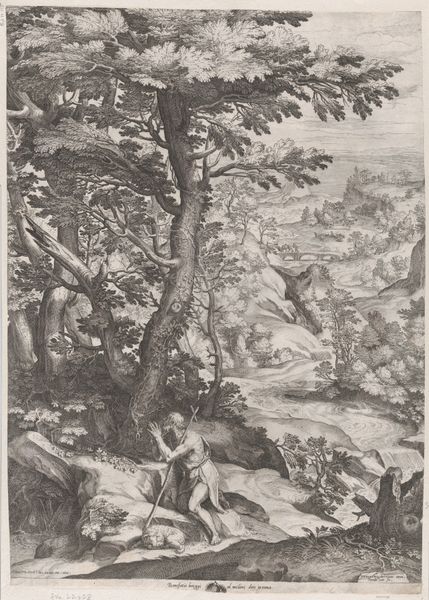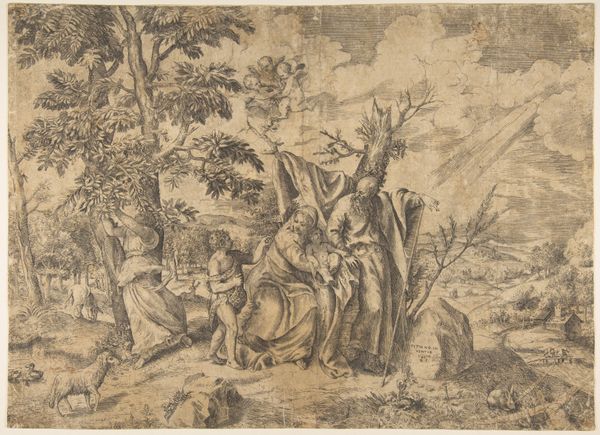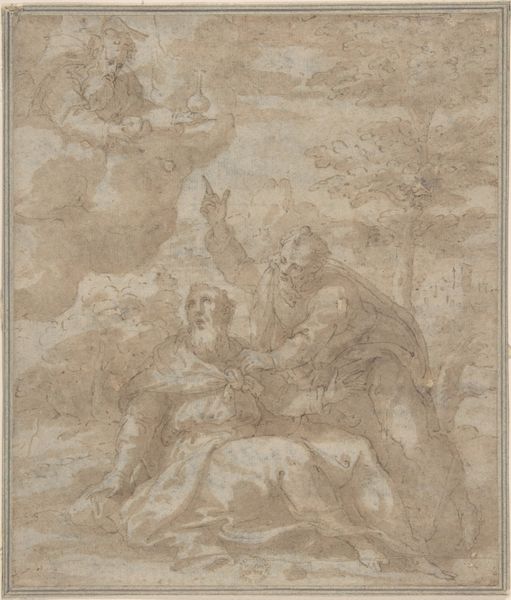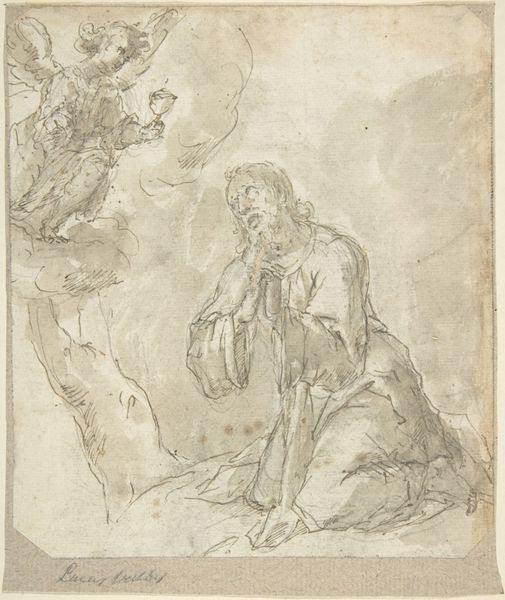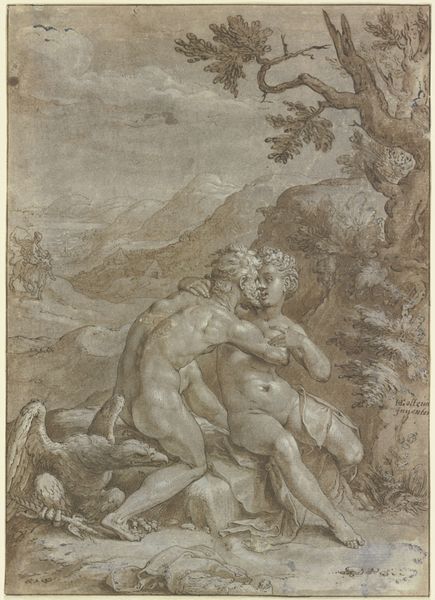
Design for a Frontispiece; Allegorical Composition with a Young Man Kneeling before a Tree 1615 - 1666
0:00
0:00
drawing, print
#
drawing
#
allegory
#
baroque
# print
#
landscape
#
charcoal drawing
#
figuration
#
classicism
#
history-painting
#
academic-art
#
italian-renaissance
Dimensions: 9-7/16 x 6-5/8 in. (24.0 x 16.9 cm)
Copyright: Public Domain
Curator: Before us is "Design for a Frontispiece; Allegorical Composition with a Young Man Kneeling before a Tree," a drawing by Giovanni Angelo Canini, likely created sometime between 1615 and 1666. Editor: It has a dreamlike quality. A young man is kneeling by a stream, almost worshipping. It’s sepia-toned and strikes me as quite dramatic, yet soft. The composition feels intentionally layered. Curator: Absolutely. Let's consider Canini's material choices. The medium—drawing, likely charcoal and perhaps some wash—allows for gradations of light and shadow. Look closely at the hatching techniques used to model the figures and create depth in the landscape. Think of the affordability and accessibility of drawing materials compared to, say, oil paint during that era. What does that say about Canini’s practice, perhaps as preparatory or a more accessible means of production for a wider audience via prints? Editor: Interesting point. It makes me think about the allegorical subject matter and who the intended audience might have been. A kneeling figure—is this an act of fealty or devotion? Is the "Academia" banner meant to ennoble those who seek it? There are warrior figures in the back too— are they a force of opposition or collaborators? Curator: Good questions. The warriors might symbolize trials, even conflicts within academic pursuit, but look how diminutive they appear in the expansive landscape. The tree, adorned with putti, feels more central. Editor: Speaking of putti, their inclusion hints at the importance of the body in philosophical development: the humanistic underpinnings of intellectual pursuit and "Academia." It speaks to broader power structures within academic institutions as gatekeepers of knowledge, and how Canini might have considered his position within those structures. Curator: Exactly, placing Canini's creative process within the material conditions of artistic production in 17th-century Italy—the commissions, the patrons, the printmaking process, it shapes the message and accessibility of art. Editor: So it is about who gets to define knowledge and truth. And how different arms in our society and culture play their own roles in this development. It offers us an image— an ideology— rather than something tangible. Curator: Indeed, by analyzing the drawing’s materiality alongside its social context, we gain insight into both its creation and its enduring cultural significance. Editor: Reflecting on the intersection of materiality and representation has changed how I will reflect on this piece. Now, its deliberate artistic hand strikes me the loudest.
Comments
No comments
Be the first to comment and join the conversation on the ultimate creative platform.
